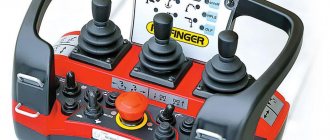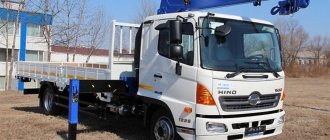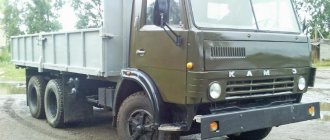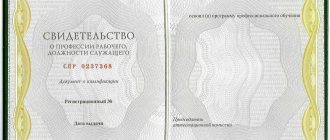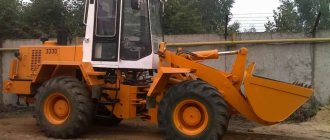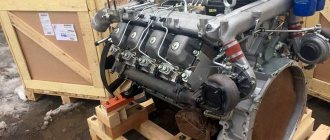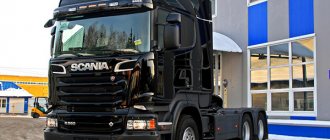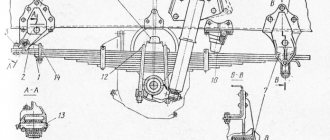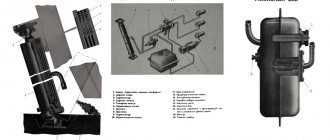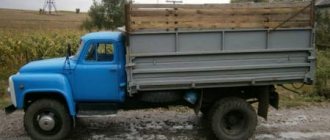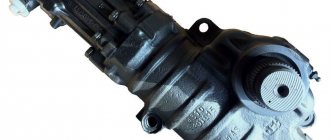Why did it happen so?
Perhaps the automatic requests do not belong to you, but to another user accessing the network from the same IP address as you. You need to enter the characters into the form once, after which we will remember you and be able to distinguish you from other users exiting from this IP. In this case, the page with the captcha will not bother you for quite a long time.
You may have add-ons installed in your browser that can make automatic search requests. In this case, we recommend that you disable them.
It is also possible that your computer is infected with a virus program that is using it to collect information. Maybe you should check your system for viruses.
If you have any problems or would like our support team, please use the feedback form.
A happy time has come when a person who has decided to buy a car is faced with choosing a make and model. And just recently. However, you get used to good things quickly.
Commercial trucks with a carrying capacity of 3–4.5 tons are used for both intracity and intercity transportation. If the parameters of the cargo being transported are known, then the model selection algorithm is clear: load capacity, dimensions of the onboard platform or van, comfort, because you often have to spend a lot of time behind the wheel, and this means driver productivity and, most importantly, safety. And only then the cost of ownership and maintenance. We, as repairmen, are sometimes asked about the cost of maintenance.
I would like to convey my opinion based on my own experience. And in no way claiming to be the ultimate truth. After all, there are so many people – so many opinions, and the quality of the cars in question is not always as stable as we would like.
“Bychok”, “Valdai”, “Zubrenok”. Three brands, three manufacturers of the former Soviet automobile industry.
What makes these models similar is the use of the same engine produced by the Minsk Motor Plant, the former tractor MMZ-240, converted into the automobile MMZ-245. The use of an intercooler and a modern fuel pump made it possible to achieve Euro-2 standards. And the engines are equipped with an imported Common Rail system from Bosch - Euro-3 standards.
The engine life has a wide variation, apparently related to the operating mode. We have come across examples with mileage over 200 thousand km without major repairs. But more often, after 130–150 thousand km, the piston group needs to be replaced. The cost of repairs is 25,000–28,000 rubles. (hereinafter the price range is determined by the make of the car).
Turbocharger. Usually it fails due to violation of operating rules due to the defect “oil getting into the intake pipe”. Reason: engine shutdown at high turbine speeds. The cost of a turbine with replacement is 12,000–14,000 rubles.
Cars have fundamentally excellent braking systems. Here the Valdai is ahead: there are no problems with disc pneumatic brakes from the German Knorr Bremse. “Zubrenok” has pneumatic drum brakes, a service life of 100,000 km, only then replacing the pads and drums costs 56,000 rubles. “Bychka” has a pneumatic-hydraulic system: front pads last up to 10,000 km, replacement – 2,300 rubles, rear pads up to 70,000 km, replacement – 5,000 rubles. It is believed that the front “Bull” braces are a constant “headache” for the owner. Our experience shows that the plant dealt with the childhood illness of the first releases, and the staples jam most often due to the lack of routine maintenance, which is a banal violation of operating rules. To be fair, neither “Zubryonok” requires increased attention to braking systems.
Clutch. Again Valdai is first. “Zubrenok” lags behind: the release bearing fork shaft often breaks; replacement costs 6,000 rubles. The “bull” lags far behind: the main problem is the wear of the driven disk linings. But here a lot depends on the driving style and operating conditions of the car: there are runs of up to 70,000 km without replacement, and some cannot even go 10,000. Replacement – 5,500 rub.
Rear axle gearbox. “Zubrenok” does not have such a problem; “Valdai” occasionally breaks the teeth of the driven gear; gearbox replacement – 24,000 rubles. With the Bychk of early production, failure of the gearbox differential was almost as inevitable as changing the oil. But then the plant solved the problem, and the defect practically disappeared; replacing the differential gearbox costs 13,000 rubles.
Only the “Bull” has problems with the suspension: by 50,000 km the rubber bushings of the springs wear out, replacement costs 12,000 rubles. To solve this problem, the plant switches to silent blocks.
Electrical equipment. The main problem with the “Bull” is the unprotected contacts of the rear lights. At Valdai it’s tolerable, at Zubrenok there is no problem.
Thus, in general, it cannot be said that the cars in question are “things in themselves,” their advantages and disadvantages are known, and with proper maintenance, surprises can be avoided. It is not recommended to operate this legacy of the Soviet automobile industry on the principle of “until it breaks”, because the cost of repairs is always higher than the cost of preventing it during scheduled maintenance.
Valdai vs. Bychk
| The GAZ-3310 Valdai medium-tonnage vehicle is an urban-type truck with a payload capacity of 3.5–4.5 tons and a low loading height of one meter. The Valdai will be equipped with an MMZ diesel engine (optional with other engines) and a three-seater cab from a one and a half ton GAZ-3302 truck. |
According to GAZ press secretary Sergei Lugovoy, the new car will be produced on a factory assembly line for medium-duty vehicles.
A pilot batch of 50 vehicles will be assembled by the end of this year, the estimated cost of the Valdai will be $11,000-12,000. According to Lugovoy, the new truck has good maneuverability, is equipped with Knorr-Bremse disc brakes and is convenient for loading and unloading due to its small size. height. It will occupy the niche of medium-duty trucks with a capacity of 3.5-4 tons, in which previously only the Bychok produced by ZIL was produced among domestic trucks. Similar foreign cars are expensive and cost $29,000-32,000. GAZ expects to occupy up to 70% of the Russian and neighboring markets in the class of medium-sized urban trucks, says Lugovoi. In 2005, the plant plans to produce 7,000-10,000 new trucks, and in 2006 to reach its design capacity of 30,000 vehicles per year. The total investment in Valdai production amounted to $29.9 million.
ZiL General Director Konstantin Laptev says that medium-sized city trucks are really in demand on the market and there will be a demand for them. However, he doubts that GAZ will be able to sell 30,000 trucks a year. First of all, Valdai will compete with other gas trucks, such as GAZelles and used foreign cars, Laptev believes. ZIL itself plans next year to begin production of new trucks with a carrying capacity of 3-4.5, 6 and 8 tons. Based on the results of 11 months of 2004, ZIL produced 6,000 Bychkov. The cost of “Bull,” according to Laptev, is $12,000-14,000.
UralSib FC analyst Vyacheslav Smolyaninov believes that GAZ will be able to sell all 7,000 trucks in 2005 - there is practically no competition in the market. However, Smolyaninov calls plans to produce 30,000 medium-duty vehicles per year ambitious and assumes that they will be adjusted.
And GAZ dealers welcome the new model, noting that the market has been waiting for it for a long time. Sergei Limonnikov, deputy general director of the official dealer - the Nizhegorodets company, says that in the line of GAZ trucks there was a gap between GAZelles with a load capacity of 1-1.5 tons and medium-tonnage trucks from 4.5 tons. Valdai will fill this gap and now the buyer will have the opportunity to choose within the entire gas line, he claims. According to him, Valdai’s declared 70% share in the medium-duty truck market is quite realistic, since foreign cars are not available to everyone, and ZiL’s Bychok “has been produced for a long time and does not quite meet modern requirements.”
Vedomosti
A little history
The first samples of a new class of truck - a low-bed, medium-duty delivery vehicle, very much in demand in the market of new Russia - were created by MA3 in the late 1990s together with the Gorky Automobile Plant. Despite the fact that the Soviet Union was put to death, the economic ties developed over decades remained strong for a long time. But later, without bringing the project to completion, each manufacturer went their own way. The Minsk Automobile Plant unilaterally refused to supply GAZ with its MAZ-5336 type cabs. And when creating our own medium-tonnage delivery truck, we took the German MAN L 2000 as a basis. Only it was decided to add load-carrying capabilities to it, and in the summer of 1999 the first MA3-4Z70 “3ubrenok” left the factory gates.
In the 2010s, the turn of a new generation of medium-duty trucks came, Minsk Auto was spared many of the shortcomings of the first model; equipped with a new restyled cabin and more modern and environmentally friendly diesel engines.
Scope of application of the machine
The main purpose of the MA3-4Z70 “3ubrenok” model is to transport various cargo, including with a trailer, on intracity, suburban and intraregional routes. Although the presence of a mobile sleeping bag in the cabin also implies some “long range”. But not interregional, of course: a low-loader is not suitable for this. Its main element is the delivery of goods to various retail chains.
The low-frame body design helps in transporting large and high loads, facilitates and increases the speed of loading and unloading the body. The main design of the vehicle is a flatbed truck, with the installation of an awning. However, the design of the MA3-4Z70 also allows the installation of a variety of special equipment on the chassis of this machine. Often “Zubryat” is equipped with cranes, lifting towers, tow trucks, compact concrete mixers and tank trucks, dump trucks, vans or refrigerators. Good maneuverability in dense traffic and medium dimensions allow the vehicle to be used in urban public utilities and in production.
Modifications
There are four main modifications of the MA3-4Z70 “3ubrenok”. They differ in the engines and gearboxes that are installed on them.
- MA3-4Z7040 – with MMZ D-245.9-540 engine and ZIL-695D (SAAZ) gearbox;
- MAZ-43704 – with MMZ D-245.30 engine (Euro-2) and SAAZ-3206.70 gearbox;
- MAZ-437043 – with MMZ D-245.30 engine (Euro-Z) and SAAZ-3206 gearbox;
- MAZ-437030 – with a Deutz BF4M 1013FC engine (Euro-Z) and a ZF S5-42 gearbox.
In addition, the produced modifications of the Zubrenok may differ in the length of the wheelbase (3 m; 3.7 m; 4.2 m); the presence or absence of a rear hitch for towing a trailer.
Engines MA3-4Z70 “3ubrenok”
The most widely used on the Zubryaty was, of course, not the German Deutz, but the cheaper diesel engine of the Minsk Motor Plant MMZ D-245, upgraded by Belarusian specialists first to Euro-2 standards, and then to the Euro-Z environmental level " This is a well-known in the CIS, time-tested “tractor” four-stroke four-cylinder diesel power unit. It is good for its reliability, unpretentiousness, endurance and high maintainability. The MA3-4Z70 engine is equipped with a turbocharger, its cylinders are arranged vertically in a row.
Technical parameters of the MMZ D-245.30 E3 diesel engine:
- Working volume – 4.75 l;
- Nominal rotation speed – 1500 rpm;
- Compression ratio – 17;
- Power – 95 kW or 157 horsepower;
- Maximum gross torque – 580 N.m;
- Diesel fuel consumption is 205 g/kWh, or 17-18 liters per 100 km;
- Dry weight of the engine is 450 kg.
Engine MMZ D-245.30
The Deutz BF4M 1013FC engine is equipped with a number of additional options that ensure its more uniform and quiet operation, with less noise and vibration load than the D-245. These are, in particular, an improved cooling system, a more modern turbocharger and an electronic speed controller. In terms of technical characteristics, Deutz is similar to MMZ. Technical parameters of the Deutz BF4M 1013FC diesel engine:
- Working volume – 4.8 l;
- Nominal rotation speed – 1500 rpm;
- Compression ratio – 17;
- Power – 170 horsepower;
- Maximum gross torque – 580 N.m;
- Diesel fuel consumption is 205-209 g/kWh;
- Dry engine weight – 560 kg.
“Bull”, “Valdai”, “Zubrenok”... “Chinese”? What to buy?
A happy time has come when a person who has decided to buy a car is faced with choosing a make and model. And just recently. However, you get used to good things quickly.
Commercial trucks with a carrying capacity of 3–4.5 tons are used for both intracity and intercity transportation. If the parameters of the cargo being transported are known, then the model selection algorithm is clear: load capacity, dimensions of the onboard platform or van, comfort, because you often have to spend a lot of time behind the wheel, and this means driver productivity and, most importantly, safety. And only then the cost of ownership and maintenance. We, as repairmen, are sometimes asked about the cost of maintenance.
I would like to convey my opinion based on my own experience. And in no way claiming to be the ultimate truth. After all, there are so many people – so many opinions, and the quality of the cars in question is not always as stable as we would like.
“Bychok”, “Valdai”, “Zubrenok”. Three brands, three manufacturers of the former Soviet automobile industry.
What makes these models similar is the use of the same engine produced by the Minsk Motor Plant, the former tractor MMZ-240, converted into the automobile MMZ-245. The use of an intercooler and a modern fuel pump made it possible to achieve Euro-2 standards. And the engines are equipped with an imported Common Rail system from Bosch - Euro-3 standards.
The engine life has a wide variation, apparently related to the operating mode. We have come across examples with mileage over 200 thousand km without major repairs. But more often, after 130–150 thousand km, the piston group needs to be replaced. The cost of repairs is 25,000–28,000 rubles. (hereinafter the price range is determined by the make of the car).
Turbocharger. Usually it fails due to violation of operating rules due to the defect “oil getting into the intake pipe”. Reason: engine shutdown at high turbine speeds. The cost of a turbine with replacement is 12,000–14,000 rubles.
Cars have fundamentally excellent braking systems. Here the Valdai is ahead: there are no problems with disc pneumatic brakes from the German Knorr Bremse. “Zubrenok” has pneumatic drum brakes, a service life of 100,000 km, only then replacing the pads and drums costs 56,000 rubles. “Bychka” has a pneumatic-hydraulic system: front pads last up to 10,000 km, replacement – 2,300 rubles, rear pads up to 70,000 km, replacement – 5,000 rubles. It is believed that the front “Bull” braces are a constant “headache” for the owner. Our experience shows that the plant dealt with the childhood illness of the first releases, and the staples jam most often due to the lack of routine maintenance, which is a banal violation of operating rules. To be fair, neither “Zubryonok” requires increased attention to braking systems.
Transmission
Existing modifications of MA3-4Z70 are equipped with manual gearboxes SAAZ-3206 or ZF S5-42. The manufacturers of these units are the Saransk Aggregate Plant and the German company ZF. All gearbox options are five-speed. The single-plate friction mechanism of the dry clutch transmits torque from the engine shaft to the transmission. The diameter of the disc is 34 cm or 36 cm. The rear axle is driven. It is equipped with a bevel gearbox and a cross-axle differential with locking.
Chassis. Brakes
The car is based on a ladder-type frame with two channel-section spars and channel- and tubular-section cross members. The MA3-4Z70 trucks have a dependent front spring suspension, equipped with hydraulic shock absorbers with stabilizers. The front axle is an I-beam with steering wheels attached to it. The rear suspension of the car is a leaf spring design. At the rear, longitudinal semi-elliptical springs are mounted, in the form of sets of steel strips. The suspension is very simple and reliable in design. The trouble-free service life of its operation, provided that vehicle overloads are avoided, is about three hundred thousand kilometers.
The brake system is drum-type on all wheels. To control the brakes, a dual-circuit pneumatic hydraulic drive with independent circuits of the rear and front pair of wheels is used. The rear drums are equipped with a battery-controlled parking brake. Some cars were equipped with disc brakes rather than drum brakes, but this is rare.
“Jagged” with an extended base.
MA3-4Z70 “3ubryonok” is equipped with steel wheels and tires of size 235/75R17.5. The rear axle has twin wheels. Initially, the model was equipped with Continental tires, since we did not produce tires of the required size. Subsequently, the Minsk Automobile Plant began to cooperate with Yaroslavl, which began supplying the partner with Ya478 tires. They became the main ones for the Zubryat.
I want to buy a bull
Tula region, Uzlovaya
February 9, 2016, 12:22 #1243
I paid attention when I changed the beam and installed these springs. There were seven sheets when purchased. I'll think about the pillows. Thanks for the tip Igor
March 20, 2016, 20:30 #1244
Selling a steer after a major overhaul of the Valdai Bridge, mileage of the bridge is 20t.km, new reinforced rear springs with sub-springs, rear tires made in China, remainder 80%, front Cormoran 50%, wheels in front of the Mercedes rear Valdai, frame extended by a gas frame with a towbar, the booth is completely new, homemade, strong made of laminated plywood 4.8*2.22*2.15. Cabin with two bedrooms, Volga seats, Webasto hair dryer, interior upholstered with carpet, the cabin itself is completely welded and painted. New Kostroma piston engine, new Czech Republic turbine, new starter, 66 gas compressor on a belt, one 190 battery, new radiator. Salen block suspension, new shock absorbers. The frame is straight without cracks or welds. The front brakes have new caliper discs. Valdai air preparation module. Music, walkie-talkie. Sold for 400 thousand rubles without bargaining, phone exchange options are possible. 89535027307,89211441778 I’m often offline, write an SMS and I’ll call you back.
Technical specifications in numbers
- dimensions
- Length: from 5.5 to 8.2 m.
- Width: 2.55 m.
- Height: 2.85 m.
- Wheelbase options: 3 m; 3.7 m; 4.2 m.
- Weight parameters
- Curb weight: 4.9 t.
- Gross weight: 10.1 t.
- Permissible load for the front axle: 3.75 t.
- Load limit for rear axle: 6.35 t.
- Standard load capacity: 5 tons.
- Internal volume of a standard “3ubrenka” body with a stretched awning: 35.5 m3.
- Wheel formula: 4x2.
- Fuel tank capacity: 100, 130 or 200 liters.
Cabin and controls of MAZ-4370
MA3-4Z70 “3ubryonok” is equipped with a three-seater (without a sleeping bag) or a two-seater (with a folding mobile sleeping bag) cabin. As noted earlier, the Zubryonok’s cabin is very, very spacious for a medium-duty vehicle, since it was borrowed from the “adult” MAZ.
The berth is a mobile-folding one, which under normal conditions is simply a shelf located in the rear of the cabin, behind the seats. Thanks to the impressive internal volume of the cabin, as well as the flat floor, three adults of any size can easily fit in it without creating problems for each other.
The driver's seat, although it cannot be called comfortable and modern, is still air-sprung and equipped with a set of adjustments. The controls are generally the same as on the “adult” MAZ.
Numerous complaints are caused by poor build quality, fit of interior trim parts, as well as the materials themselves from which the cabin is made. Cheap and unpretentious plastic and leatherette, although they evoke warm nostalgia for the Soviet Union, in the 21st century they no longer look out of place on a car. There are simply no words about the finger-thick cracks often found on Zubryat at the joints of the rubber panels.
Owners of bulls, can you help me decide?
Owners of bulls, can you help me decide? I want to buy a bull, what should I pay attention to when buying? what are his weak points? How is it generally for long trips. what secrets does he have? Thanks in advance for your help!
Personally, I came across the fact that in order to remove the head you need to cut a hole in the cab panel and the engine is very inconvenient to install and remove, again because of the cab. The vibration from the motor is strong, but nothing can be done about it, a tractor is a tractor. If with If you're overloaded, you'll often cut off the clutch disk. But it doesn't work.
Look at the piston, turbine, fuel. equipment and condition of the power steering and king pins. I advise you not to take Euro 3 and 4 - you will get stuck with spare parts. Its weak point is the crankshaft, which breaks when engine braking. The best option for internal combustion engines is 245.9.
Personally, I came across the fact that in order to remove the head you need to cut a hole in the cab panel and the engine is very inconvenient to install and remove, again because of the cab. The vibration from the motor is strong, but nothing can be done about it, a tractor is a tractor. If with If you're overloaded, you'll often cut off the clutch disk. But it doesn't work.
The cabin just needs to be untied from the cushions on one side and jacked up. But on the Valdai the cabin will have to be removed.
Isn’t it easier to take a ZIL with a diesel engine? Or the same "Rex"?
But the “bull” only comes in diesel form.
Not true! In my life I have met a ZIL V8 under the hood of a bull! About ZIL, I meant more convenient maintenance and repair. And it will cost about the same!
I don’t even consider a simple ZIL as an option, a simple ZIL is very big, and the “bull” is smaller, and even faster. For a large vehicle, cargo is more difficult to find.
But the prices are higher for a ZIL, and if you take an MMZ with a diesel engine, the consumption is not much more! Yes, and how “faster”. My brother, when he was driving a diesel REX at 110 km/h on the highway, walked calmly with 7 tons of cargo in the booth!
But the “bull” only comes in diesel form.
There are Zils with diesel engines (They are even worse than bulls.
This is probably what handles to use!
No, it’s normal for the city, you’ll get it under you and it will run. They even come with a sleeping bag, then you can continue driving.
I just had one with two sleeping bags, but in winter there’s nothing to do in it without autonomy
that’s not a boring car, any Merc, as was said here like Rex or Mitten, will serve for his homeland, and the bull will die eight times and you’ll become a stutterer along with him) no offense, this is my opinion
Bychara is a normal car, worth the money. There are problems, but they can be fixed even in the field, unlike foreign cars. My opinion is that if you don’t have a lot of money, then take a bull, even an old one, but in no case on credit, he will recoup himself, but you will have to tinker a little. I bought mine for 160, but the body is long, so the problems needed to be replaced: replace the gasket for the compressor, replace the gasket for the centrifuge, replace the clutch, brake discs and pads, replace the battery and that’s it. Yes, I almost forgot the torch device for the winter start-up, I threw out the nafik, and instead installed an electric antifreeze heater, a problem can arise with the electrics, there are 12 on board and 24 for starting and two batteries, I solved the problem, I just changed everything to 24 volts and that’s it.
Bychara is a normal car, worth the money. There are problems, but they can be fixed even in the field, unlike foreign cars. My opinion is that if you don’t have a lot of money, then take a bull, even an old one, but in no case on credit, he will recoup himself, but you will have to tinker a little. I bought mine for 160, but the body is long, so the problems needed to be replaced: replace the gasket for the compressor, replace the gasket for the centrifuge, replace the clutch, brake discs and pads, replace the battery and that’s it. Yes, I almost forgot the torch device for the winter start-up, I threw out the nafik, and instead installed an electric antifreeze heater, a problem can arise with the electrics, there are 12 on board and 24 for starting and two batteries, I solved the problem, I just changed everything to 24 volts and that’s it.
Reviews from drivers and owners about “Zubryat”
The demand for medium-tonnage MA3-4Z70 “3ubryonok” trucks was great in the 2000s, and at one time they were very popular in the vastness of the former USSR. Therefore, our people studied this model well and described it in great detail in their reviews. According to these reviews, the car has four main advantages and trump cards. This is a cheap price (in comparison with new “classmates” made in Europe); simplicity, maintainability and relative low cost of maintenance and repair; large load capacity for a vehicle of this class; and low diesel fuel consumption (which does not differ from that declared by the manufacturer and is actually at the level of 17-18 liters per 100 km. Also, as a clear advantage of this model, the driving performance of the suspension is noted: the car rides smoothly, and even at maximum load there is no breakdown .
There are also plenty of shortcomings and outright shortcomings. Drivers and owners have complaints about the cabin heating system. In real Russian frosts, there is still enough heat to heat the windshield, but the side windows freeze, and no heating modes can save them. In winter, while driving, drafts begin to freely “walk” through the cabin, and drivers have to insulate it in every possible way and seal the cracks.
The open shelf above the head, intended for documents, does not cope with its functions - papers periodically fall down as we move. A driver of average height has to move the seat almost to the rear wall of the cabin in order to comfortably sit behind the wheel. On a new car, the back of the seat does not yet touch the rear wall of the cabin, but over time this structure becomes loose, and the back of the seat begins to rub against the wall of the cabin and tear the upholstery. You can move the seat closer to the steering wheel, but then the steering column ends up between your legs - uncomfortable.
The pedal assembly causes complaints. Namely, the high location of the clutch pedal. In addition, in order to push it through, it is necessary to make a considerable effort. The cabin lacks rigidity. If you fold it back, then the doors can no longer be opened or closed. Therefore, if you need to raise the cabin, you must remember to take everything you need from it. It is also important that you can open the cabin doors with almost any key, even a regular door lock. Drivers get out of the situation by hammering a wooden wedge into one of the lock cylinders, and blocking the other door automatically when the alarm is turned on, while the door lock cylinder does not participate in either the process of opening or closing the door.
The D-245 tractor engine, although modernized for installation on cars, still remains too noisy, and the increased vibration load from its operation is annoying even after you get used to it. To replace the oil filter, you have to remove the air charge turbine. Otherwise, changing the filter will not work. This is the design cost when a turbocharger was installed on a tractor engine with a block layout not adapted for turbocharging. It (the turbocharger) interferes with manipulations with the coarse fuel filter. The filter bowl is mounted on four bolts behind the turbine, and in order to unscrew and tighten them, you have to be truly flexible.
The car's paint job leaves much to be desired. The paint on the sides and on the side underride bars is peeling off in patches; after the first years of operation, the cabin becomes “freckled” from small pockets of rust. In winter, ice accumulates in the recesses on the flat tent roof, and with sharp braking from below, you can get a sizeable block of ice on the roof of the cabin. An important point: MA3-4Z70 “3ubrenok” really doesn’t like overloads: the suspension breaks.
Bychek, Valdai, Maz.
a few words about Bychka.
Is it really that problematic? I don’t know what to watch anymore.
1.5 tonage can't be pushed in. everything is really full of them. more than two months they promise zero in the end.
there is work for 3-4 tons.
As an option, either a couple of bulls in good condition or a couple of Valdai but pretty shabby.
You can get a bull for 200 to change the engine (130 rubles) and tires (60 rubles)
Also as a variant of ointment. years so 2002-2004 (but here I didn’t count what)
If you are traveling between cities, then Bychek with a sleeping bag is the best option.
If around the city, then Valdai.
If the ignition goes wrong, then the engine will be fucked by the Belarusian.
I know that there is engine from the Belarusian, there 240 is less expensive in terms of fuel and without a turbine. By the way, very reliable. fuel is finally a fairy tale. didn't know what it was.
the 245 bulls are a little more powerful, with a turbine, more revving, they added a little more fuel. also like an unpretentious motor.
The engines of both the bull and Valdai are identical. boxes from older brothers. They don’t seem to be complaining about the frames either.
The brakes of one are problematic, the second one is comfortable in the engine compartment and there is half an engine in the cabin.
Well, about the oil. I wish they would calm me down more when a couple of them runs around. I can’t handle a couple of smears.
what to carry? pies, or something more serious.
Personally, I advise you not to mess with used lubes
I have experience, a long time ago, back in 2002 when I still had a small company, the question arose about purchasing a tractor for a trawl
We need cars that will bring in money, although not a lot, but money.
There were mazes. dump trucks. It’s very easy to buy them, but to sell them. They were on sale for several months. and they required a lot of investments, either a turbine, or a clutch (infinitely), or tires. The engine on one was repaired. and all this doesn’t cost a penny.
I provided the links above which and in what condition the trucks will be.
That's how it went down. And before I was a decent person, I drove an Audi.
he says, the maz have sucked up all the money
These are already details. Allodin's a loser!
here you have to consider whether repairs are rare, but expensive, or repaired often, but cheap...
anyway, he said that Valdai is an order of magnitude more expensive, and if the author of the topic has work for cars that is so-so and he drives and will not drive himself, then it’s definitely a bull, MAZ is a damn ass, those who had MAZs threw them only on the road, I remember Maz's father had a saddle maker. And there were no mobile phones, so they were constantly breaking down somewhere. The neighbor has a maz, so he just does what he fixes and fixes it.
for example, a guy works alone at an enterprise, at a ZILka with a new cab, so he doesn’t go anywhere on it, and this bull never let him down on the road, only small things broke, like the light went out or the wipers stopped working))) but the car drives and rides, and they have new bulls, so new and old are one thing or another.
author, is tonnage or cubic capacity important to you? I just have a friend who has a Valdai, he has a cubic capacity like a Zubrenka Maz, a long wheelbase + 5 or 7 landing gear, I don’t remember exactly (Kayuina is a farmer), so the Valdai will be more interesting than the Maz in this regard, it will be easier to control and more reliable, in general it’s up to you, he just took one Valdai for 440, and another for 400 about a year ago, you just need to look, and he sold the bull in awesome condition for 250 thousand, took care of it, changed everything on time and there was no rust anywhere
Source
Cost of the MA3-4Z70 “3ubrenok” truck
There are a lot of used MA3-4Z70 “3ubrenok” cars from the 2000s on the secondary market. The price range is from 350 to 900 thousand rubles, depending on the year of manufacture, mileage and specific technical condition.
In general, despite all the shortcomings, the MA3-4Z70 “3ubryonok” proved to be an inexpensive car to purchase and easy to maintain, which quickly pays for itself and begins to make a profit.
Choosing a Maz or Kamaz manipulator?
On 03/16/2016 at 16:41, the private owner said:
Yes, amendments have already been introduced...... it seems like there should be a tachograph..
Congratulate everyone !!!
Order of the Ministry of Transport of the Russian Federation (Mintrans of Russia) dated January 28, 2016 N 16 Moscow “On introducing changes to the Categories and types of vehicles equipped with tachographs, approved by order of the Ministry of Transport of the Russian Federation dated February 13, 2013 N 36” Registered in the Ministry of Justice of the Russian Federation on February 26, 2016 Registration N 41211 In accordance with the Decree of the Government of the Russian Federation of November 23, 2012 N 1213 “On the requirements for tachographs, the categories and types of vehicles equipped with them, the procedure for equipping vehicles with tachographs, the rules for their use, maintenance and control of their work" (Collected Legislation of the Russian Federation, 2012, No. 48, Art. 6714) I order: To make changes to the Categories and types of vehicles equipped with tachographs, approved by order of the Ministry of Transport of the Russian Federation dated February 13, 2013 No. 36 " On approval of the requirements for tachographs installed on vehicles, categories and types of vehicles equipped with tachographs, rules for the use, maintenance and control of the operation of tachographs installed on vehicles" (registered by the Ministry of Justice of Russia on March 7, 2013, registration N27574) with amendments, introduced by order of the Ministry of Transport of the Russian Federation dated December 17, 2013 N470 (registered by the Ministry of Justice of Russia on February 24, 2014, registration N 31406), according to the appendix to this order. And about. Minister E. Dietrich Appendix Changes made to the Categories and types of vehicles equipped with tachographs, approved by Order of the Ministry of Transport of the Russian Federation dated February 13, 2013 N 36 “On approval of requirements for tachographs installed on vehicles, categories and types of vehicles, equipped with tachographs, rules for the use, maintenance and control of the operation of tachographs installed on vehicles" 1. Paragraph eight should be worded as follows: "vehicles approved for international road transport in accordance with the vehicle access card for international road transport ( Order of the Ministry of Transport of Russia dated June 16, 2014 N158 “On approval of forms of certificate forms and vehicle access cards for international road transport” (registered by the Ministry of Justice of Russia on July 31, 2014, registration N33370), equipped with control devices in accordance with the requirements of the European agreement concerning the work of crews of vehicles engaged in international road transport (AETR, Geneva, July 1, 1970)1;". 2. In the tenth paragraph: the words “and vehicles equipped with cranes” should be deleted; the words “self-propelled agricultural machines” should be replaced with the words “specialized vehicles (specially equipped milk tankers, livestock tankers, machines for transporting poultry, eggs, live fish, machines for transporting and applying mineral fertilizers), vehicles of categories N2 and N3 used by agricultural producers in the implementation of intra-farm transportation (transportation within the boundaries of the municipal district in which the vehicles are registered, as well as municipal districts bordering it), special vehicles"; 3. Paragraph fourteen should be stated as follows: “vehicles included in the list of types and categories of wheeled vehicles and chassis, from the year of manufacture of which 30 or more years have passed, which are not intended for commercial transportation of passengers and cargo, have an original engine, body and frame (if any), preserved or restored to the original condition and in respect of which the recycling fee is in accordance with Decree of the Government of the Russian Federation of December 26, 2013 N 1291 “On the recycling fee in relation to wheeled vehicles and chassis and on amendments to certain acts of the Government of the Russian Federation"2 are not paid;". Well, if you are an individual entrepreneur, then where is this
3. Fine for the absence of a tachograph, its incorrect installation or malfunction. For the release of a vehicle on the line without a tachograph, if its installation is provided for by the legislation of the Russian Federation, as well as with a non-working tachograph, one that does not meet the requirements or installed in violation of the rules, fines are expected: for an official for the release of such a vehicle on the line - from 70,000 to 100,000 rubles. , for a legal entity - from 100,000 to 150,000 rubles. 4. Administrative liability for releasing a vehicle that is faulty or in violation of the equipment rules: - fine for the official and individual entrepreneur - 50,000 rubles; for a legal entity – 200,000 rubles.
